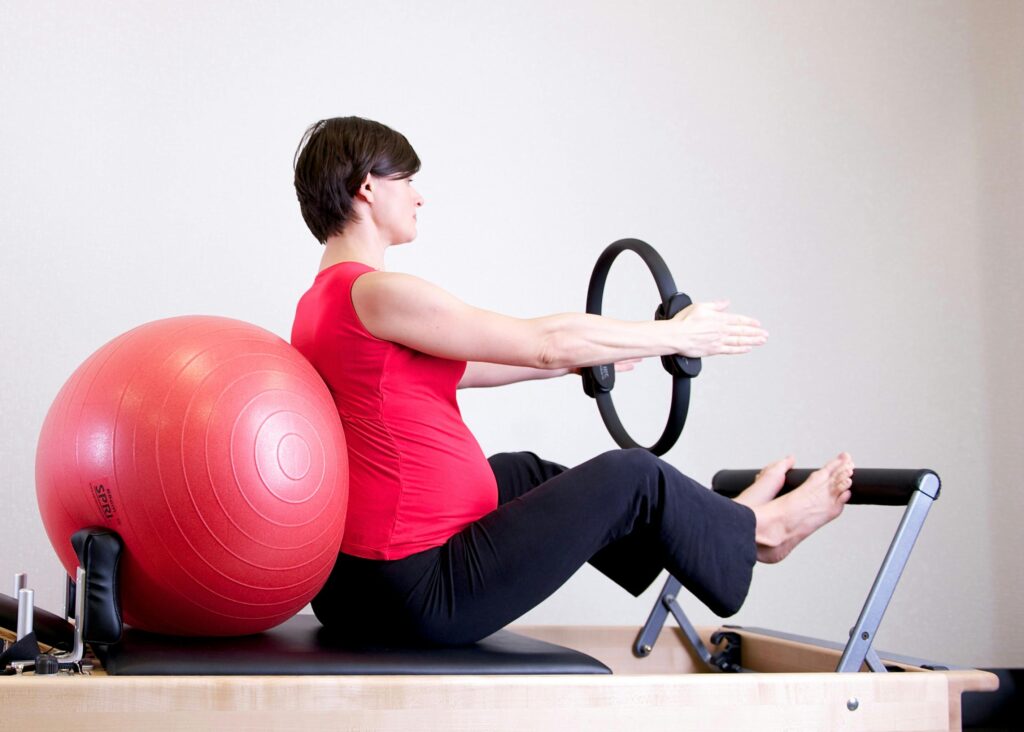The moment that pregnancy test revealed you’re expecting, your world transformed in an instant. Suddenly, you’re questioning every aspect of your routine—including how to stay active. Should you keep going to your spin class? Is it safe to lift weights? What about your morning runs? As someone who’s guided thousands of women through pregnancy and birthed five babies of my own, I’m here to tell you that exercising safely in early pregnancy isn’t just possible—it’s beneficial for both you and your baby.
Why Exercise Matters During the First Trimester
When morning sickness and fatigue have you glued to the couch, working out might be the last thing on your mind. But maintaining some form of physical activity during these early weeks offers remarkable benefits that extend throughout your pregnancy journey.
The Science-Backed Benefits of Exercising Safely in Early Pregnancy
Research continues to confirm what I’ve observed in my two decades of midwifery practice: women who maintain appropriate physical activity during pregnancy typically experience:
- Reduced back and pelvic pain
- Better sleep quality (despite those midnight bathroom trips!)
- Improved mood and reduced anxiety
- Less severe morning sickness for many women
- Better blood sugar management
- Increased stamina for labor and delivery
- Faster postpartum recovery
According to the American College of Obstetricians and Gynecologists, maintaining regular exercise during pregnancy can also reduce your risk of gestational diabetes by up to 38% and may lower the chances of developing preeclampsia.
I vividly remember Sarah, a first-time mom who came to me worried that continuing her thrice-weekly yoga practice might harm her baby. Not only did I reassure her that modified yoga was perfectly safe, but when I saw her at 38 weeks, she credited her consistent practice with keeping her lower back pain manageable throughout pregnancy. She went on to have a smooth six-hour labor—something she attributed partly to her maintained core strength and stamina.
The First Trimester Difference
While exercising safely in early pregnancy shares many principles with exercise throughout your pregnancy, those first 12 weeks present unique considerations:
- Your body is undergoing rapid hormonal changes
- The embryo is implanting and beginning critical development
- Morning sickness and fatigue may be at their peak
- Your pregnancy might still be private information
- Your body doesn’t yet look pregnant, but internal changes are significant
This is why first-trimester exercise deserves its own thoughtful approach—one that honors both your changing body and your growing baby.
First Trimester Exercise Guidelines: What’s Safe and What’s Not

Before diving into specific workouts, let’s establish some ground rules for exercising safely in early pregnancy. These principles will help you modify your existing routine or build a new one that supports your changing body.
Green Light Activities: Generally Safe for Most Women
If you’ve been regularly engaging in these activities before pregnancy, you can typically continue with appropriate modifications:
- Walking
- Swimming and water exercises
- Stationary cycling
- Low-impact aerobics
- Modified yoga and Pilates
- Light to moderate strength training
- Elliptical training
When I was pregnant with my twins (pregnancy number four!), walking and prenatal yoga became my sanctuary—a space where I could connect with my changing body while strengthening the muscles I’d need for carrying two babies.
Yellow Light Activities: Proceed with Caution
These activities may be continued with careful modification and extra awareness:
- Running/jogging (if you were a runner before pregnancy)
- Tennis or racquetball (being mindful of balance changes)
- More vigorous strength training (reducing weights by about 20-30%)
- Higher-intensity dance classes (with modifications for jumps and twists)
I worked with an Olympic-level athlete during her first pregnancy who continued training throughout her first trimester. The key was constant communication with her healthcare team and immediate adjustments when something didn’t feel right.
Red Light Activities: Best Avoided
Some activities carry higher risks in pregnancy and are generally not recommended:
- Contact sports (basketball, soccer, hockey)
- Activities with fall risks (horseback riding, skiing, surfing)
- Scuba diving
- Hot yoga or hot Pilates
- Heavy weight lifting or powerlifting
- High-altitude exercise (above 6,000 feet if you’re not accustomed to it)
When Maria, an avid rock climber, discovered she was pregnant, she was devastated at the thought of giving up her passion. We worked together to find alternative ways to maintain her upper body strength while keeping her and her baby safe. By her second trimester, she’d found a new appreciation for swimming as it mimicked some of the full-body engagement she loved about climbing.
The 5 Best First Trimester Workouts
Now that we understand the framework for exercising safely in early pregnancy, let’s explore specific workouts that offer maximum benefit with minimal risk during these early weeks.
1. Walking: The Perfect Pregnancy Foundation
Never underestimate the power of a good walk. This accessible exercise can be tailored to any fitness level and requires nothing but a supportive pair of shoes.
Why walking works in the first trimester:
- Gentle on nauseous tummies
- Can be done in short bursts when energy is limited
- Improves circulation without overheating
- Provides fresh air that can help with morning sickness
- Easily modified based on daily energy levels
Try this: Start with 10-15 minute walks three times daily instead of one longer walk. This approach works well with fluctuating energy and can help manage morning sickness. With my third baby, I found that short walks after meals significantly reduced my nausea.
2. Prenatal Yoga: Connecting Body and Baby

Yoga offers the perfect combination of strength, flexibility, and mindfulness—all valuable components for your pregnancy journey.
First trimester yoga benefits:
- Builds core stability for supporting your growing uterus
- Improves balance (which will become more challenging later)
- Teaches breathing techniques valuable for labor
- Provides stress relief during this emotional time
- Offers community with other expectant mothers
Modifications for the first trimester:
- Avoid deep twists that compress the abdomen
- Skip inversions if they’re new to you
- Be cautious with hot yoga (elevated body temperature concerns)
- Listen to your body and rest when needed
- Inform your instructor about your pregnancy
Many studios offer specific prenatal classes, but if those aren’t available, a regular gentle or beginner yoga class with appropriate modifications works well too.
3. Swimming: Weightless Wonder
There’s something magical about slipping into water when you’re pregnant. The buoyancy immediately relieves pressure on your joints and creates a sense of lightness.
Swimming and water exercise benefits:
- Provides cardiovascular exercise without impact
- Natural cooling effect prevents overheating
- Relieves pressure on joints and ligaments
- Often reduces nausea and other discomforts temporarily
- Strengthens large muscle groups without strain
Emma, a runner experiencing significant round ligament pain by week 10, found that swimming laps three times weekly maintained her fitness while giving her body the break it needed from high-impact exercise.
4. Strength Training: Building Foundations
Contrary to outdated advice, appropriate strength training is not only safe but beneficial during pregnancy. The key is proper form and sensible modifications.
First trimester strength training guidelines:
- Reduce weights by about 20-30% from your pre-pregnancy routine
- Focus on form rather than increasing resistance
- Avoid exercises that require lying flat on your back for extended periods
- Be mindful of balance changes
- Skip exercises that place direct strain on the abdomen
A sample strength routine for the first trimester:
- Squats with or without light weights (8-12 reps, 2-3 sets)
- Modified push-ups (against wall or on knees) (8-12 reps, 2-3 sets)
- Seated rows with resistance band (8-12 reps, 2-3 sets)
- Standing bicep curls with light dumbbells (8-12 reps, 2-3 sets)
- Pelvic floor exercises (10 reps, 3 sets)
According to Mayo Clinic research, maintaining strength during pregnancy can reduce discomfort, prepare your body for the physical demands of childbirth, and speed postpartum recovery.
5. Pelvic Floor Exercises: Your Invisible Foundation
While not a traditional “workout,” pelvic floor training deserves its own category due to its incredible importance during pregnancy and beyond.
Why pelvic floor exercises matter:
- Support your growing uterus
- Help prevent urinary incontinence
- Prepare for the demands of delivery
- Aid in postpartum recovery
- Can improve sexual function
How to do them right:
- Identify the correct muscles (the ones you use to stop urination midstream)
- Contract these muscles for 5-10 seconds, then release completely
- Avoid holding your breath
- Aim for 3 sets of 10 contractions daily
- Practice in different positions (sitting, standing, hands and knees)
I often tell my pregnant clients that pelvic floor exercises are like saving money in a bank account—every day you do them builds resources you’ll draw upon during delivery and recovery.
Listening to Your Body: The Most Important Exercise Skill
The foundation of exercising safely in early pregnancy isn’t about specific workouts—it’s about developing the skill of truly listening to your body. This may sound simple, but pregnancy has a way of making this both more challenging and more important than ever before.
Warning Signs to Stop Exercise Immediately
While exercise is generally safe, certain symptoms indicate you should stop and consult your healthcare provider:
- Vaginal bleeding or fluid leakage
- Dizziness or feeling faint
- Chest pain or racing heartbeat
- Severe headache
- Calf pain or swelling
- Uterine contractions or abdominal pain
- Difficulty walking or significant muscle weakness
- Shortness of breath before exertion
Jennifer, a client who loved her high-intensity interval training, noticed unusual dizziness during her workouts around week 8. By listening to this warning sign and seeking medical advice, she discovered her iron levels were extremely low. With appropriate supplementation, she was able to return to modified versions of her favorite workouts a few weeks later.
The Talk Test: Your Built-in Intensity Monitor
When exercising safely in early pregnancy, a simple way to gauge whether your intensity level is appropriate is the “talk test.” You should be able to carry on a conversation while exercising. If you’re too breathless to speak comfortably, it’s time to dial back the intensity.
Creating Your First Trimester Exercise Routine
Now that we’ve covered what to do and what to avoid, let’s put it all together into a realistic plan that honors both your fitness goals and the unique demands of early pregnancy.
Sample Weekly Schedule
Monday: 20-30 minute walk + pelvic floor exercises
Tuesday: Prenatal yoga or gentle stretching
Wednesday: 15-20 minutes light strength training + walk
Thursday: Swimming or water aerobics
Friday: 20-30 minute walk + pelvic floor exercises
Saturday: Longer activity of choice (based on energy)
Sunday: Rest day with gentle stretching
Remember, this is just a template. Some days, a nap might be more beneficial than a workout—and that’s perfectly okay! The goal is consistency over time, not perfection every day.
Adapting to First Trimester Challenges
For morning sickness:
- Exercise during your least nauseous time of day
- Try brief walks in fresh air when nausea strikes
- Stay well-hydrated before, during, and after activity
- Keep plain crackers or ginger candy in your workout bag
- Consider water-based exercise, which many women find easier on queasy stomachs
For extreme fatigue:
- Lower your expectations but try not to skip entirely
- Even 5-10 minutes of gentle movement counts
- Schedule workouts during your natural energy peaks
- Remember that regular exercise often improves energy levels
- Prioritize quality sleep over early morning workouts if needed
During my second pregnancy, my usual morning workout routine became impossible due to severe morning sickness. Instead, I found that short evening walks after dinner were manageable and actually helped settle my stomach before bed.
Exercise When Your Pregnancy Is Still Private
Many women choose to keep their pregnancy news private during the vulnerable first trimester, which can make navigating exercise classes or gym routines tricky. Here are some strategies:
- Blame modifications on a “minor injury” if questioned
- Schedule workouts during less crowded times
- Work with a trainer who knows your situation and can discreetly modify
- Focus on solo activities until you’re ready to share your news
- Have simple responses prepared for declining certain activities
When Alicia, a dedicated CrossFit enthusiast, discovered she was pregnant, she was only six weeks along and not ready to share her news with her gym community. We developed a set of modifications she could implement while telling her coach she was dealing with “some core issues” that required scaling back certain movements.
Finally: Balance and Intuition
Throughout my years as both a midwife and a pregnant woman, I’ve found that exercising safely in early pregnancy comes down to finding the sweet spot between movement and rest. Some days, you’ll feel amazing and capable; other days, simply getting through your workday will feel like running a marathon.
Honor both experiences. Move when it feels good, rest when you need to, and trust that your body is doing important work either way.
Remember that the goal isn’t maintaining your pre-pregnancy fitness level or achieving personal records. It’s about supporting your changing body, preparing for the journey ahead, and creating a healthy environment for your growing baby.
The mother who exercises during pregnancy isn’t just stronger physically—she’s practicing the flexibility, adaptation, and self-awareness that will serve her well throughout parenthood. Because if there’s one thing I’ve learned from bringing five babies into this world and helping thousands of women do the same, it’s that motherhood requires strength far beyond what any gym can measure.



